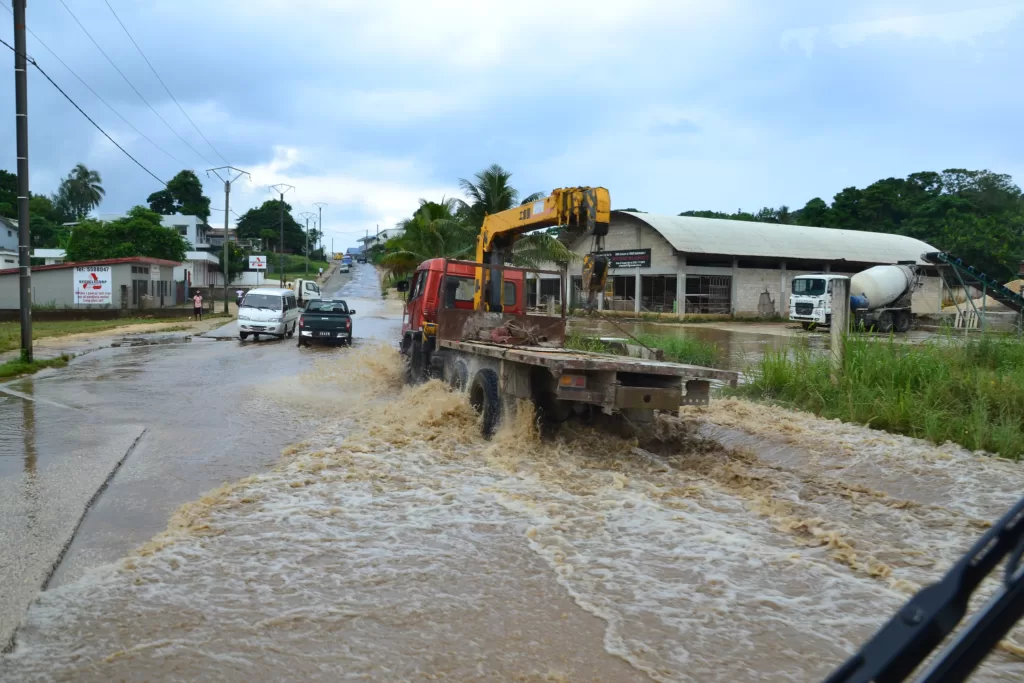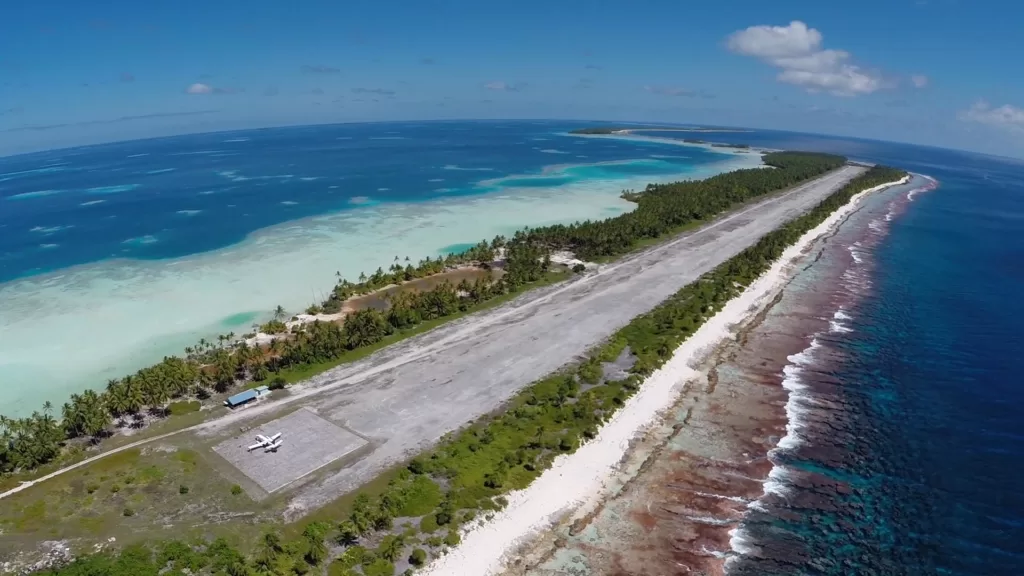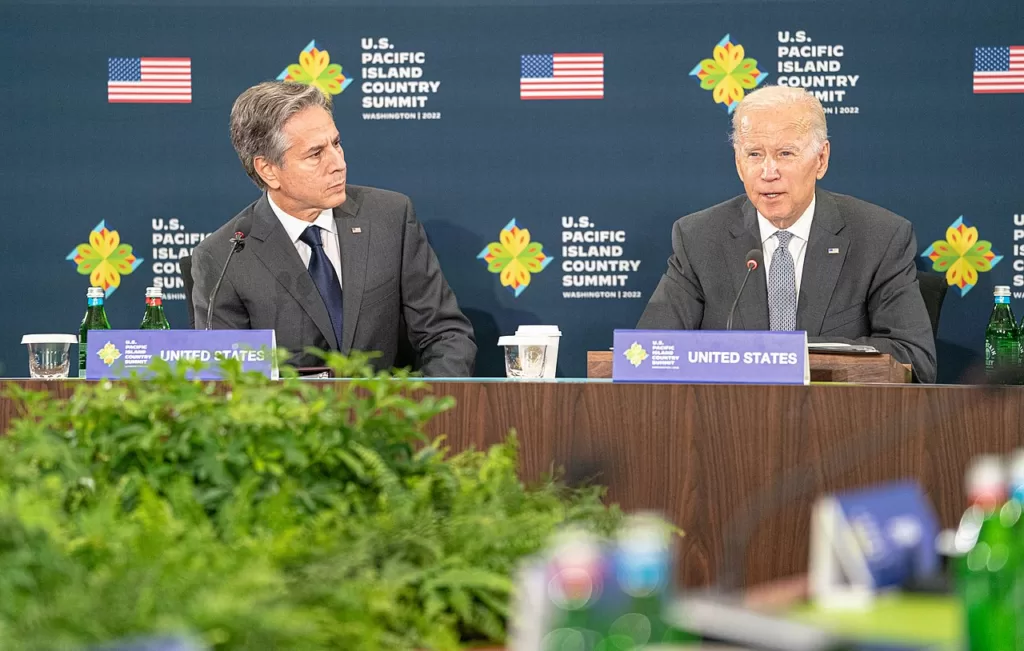The PIF Leaders' Meeting is an important chance to jolt the world into action on a climate Loss and Damage Fund after decades of fighting for justice.
 A Loss and Damage Fund was supposed to help vulnerable nations pay for climate-related costs, but a lack of unity has undermined its effectiveness. : Simon_sees, Flickr CC BY 2.0-DEED
A Loss and Damage Fund was supposed to help vulnerable nations pay for climate-related costs, but a lack of unity has undermined its effectiveness. : Simon_sees, Flickr CC BY 2.0-DEED
The PIF Leaders’ Meeting is an important chance to jolt the world into action on a climate Loss and Damage Fund after decades of fighting for justice.
For decades, small island developing states have struggled to achieve some form of global climate justice. Of the USD$100 billion in climate finance pledged to developing economies in 2019, small island developing states had access to only USD$1.5 billion.
The Loss and Damage Fund established at COP27 is an important step in the right direction. But a few weeks ago, at the fourth meeting of the Transitional Committee, countries failed to reach an agreement on key details of the fund — the hosting, the scale and sources of financing and the resource allocation.
The upcoming Pacific Islands Forum Leaders’ Meeting and COP28 offer the opportunity to raise more awareness about the environmental challenges facing small island developing states. It gives them a chance to find common ground with other countries and to finally establish a Loss and Damage Fund that helps restore climate justice.
Small island developing states have spent 18 times more in debt repayments than they received in climate finance. Notwithstanding their high degree of environmental vulnerability, they receive seven times less climate finance than the least developed economies, 11 times less than lower-middle-income countries and five times less than upper-middle-income countries.
Small island developing states are particularly at risk of climate change and extreme weather events. According to a report developed by the United Nations Sustainable Development Solutions Network (SDSN), small island developing states are the most environmentally vulnerable countries in the world.
Small island developing states located in the Pacific are the most vulnerable to environmental shocks, including sea level rise, droughts, biodiversity loss and displacement of people living along the coasts. These environmental shocks cause significant damage to sectors critical to their economies, such as tourism, fisheries and agriculture.
As a result, small islands face greater gaps to SDG achievement than the rest of the world, according to the SDSN report. Pacific small island developing states are the farthest behind and have the greatest number of targets (44 percent) moving in the wrong direction.
Although small island developing states have been able to cope with environmental threats over centuries, the challenges brought by continuous changes in the climate system are unprecedented.
There is an undeniable rise in the frequency and intensity of extreme weather events and slow-onset processes, like sea level rise, ocean acidification and salinisation, land degradation, desertification or glacial retreat. These disproportionately hurt the most vulnerable economies.
In the last two decades, the frequency of disasters experienced by small island developing states has doubled. Scientists and the Intergovernmental Panel on Climate Change agree that a large share of climate changes is directly due to human activities and, in particular, to human-made increasing greenhouse gas emissions and changes in land use.
Yet small island developing states have contributed the least to human-induced climate change. Data shows that, over the period 1850-2019, small island developing states were responsible for just 0.02 percent of all carbon dioxide (CO2) emissions from fossil fuels.
The US alone accounted for more than 34 percent of total emissions, the European Union for almost 24 percent and China for nearly 19 percent.
However, because of climate-related disasters for which other nations are responsible, small islands are facing disproportionate losses and damages at the economic (loss of infrastructure, destruction of human activities and services) and non-economic (loss of people, ecosystems, biodiversity and cultural heritage) levels, which add to adaptation and mitigation costs.
The loss and damage costs for small island developing states are massive and cannot be covered by their often limited domestic resources. A recent study estimates that, in small island developing states over the period 1970-2018, natural disasters caused on average an annual damage of 2.1 percent of GDP.
There is still no consensus on who should host the Loss and Damage Fund. While developed economies push for having the World Bank as a host institution, developing economies ask for the creation of a new independent entity, as they believe the World Bank could tip the balance of power towards richer nations.
There is also still no clear framework for defining the scale and sources of financing of the Loss and Damage Fund, including who will contribute and how much and the eligibility criteria.
The burden of financing for human-induced climate costs should be shared fairly and globally among responsible countries. This is the only way to align with the principle of Common but Differentiated Responsibilities and Respective Capabilities on which all countries agreed back in 1992.
A forthcoming paper by the SDSN argues that each country should be responsible for funding its own mitigation measures.
But, the paper argues, the costs of adaptation and loss and damage to disasters caused by human activity should be shared among polluting countries only, according to their historical and current responsibility in greenhouse gas emissions.
On the other hand, the share of adaptation and loss and damage costs which is caused by natural variability should be shared among all countries, including those not responsible for but affected by climate change. This could provide the right incentive to affected countries to continue investing in their efforts to adapt to climate change.
Policymakers would benefit from a widely accepted framework to help quantify costs for adaptation and loss and damage (including non-economic costs). This could be done through a cost indicator framework which fairly splits the burden of the share of these costs caused by human-caused climate change among responsible countries.
The final objective should be to create a special fund with the payments realised by countries in proportion to their share of current and historical greenhouse gas emissions, relative to their population size. This fund could act as global insurance, paying affected countries equal to their adaptation and loss and damage costs resulting from global human-induced climate change.
The right functioning of this dedicated fund can prevent countries from contracting new loans to finance climate-related costs, increasing their burden of debt and jeopardising their capacity to recover and build resilience to climate change.
Isabella Massa is Senior Economist at the UN Sustainable Development Solutions Network (SDSN), where she leads the work on SDG financing and vulnerability. Previously, she worked at the Overseas Development Institute (ODI) and International Monetary Fund (IMF) and as an independent consultant for several international organisations.
Samory Toure is a Program Associate at the UN Sustainable Development Solutions Network (SDSN). As a junior economist, he has previous professional experience at the UN ESCAP and the OECD Development Centre.
Originally published under Creative Commons by 360info™.










